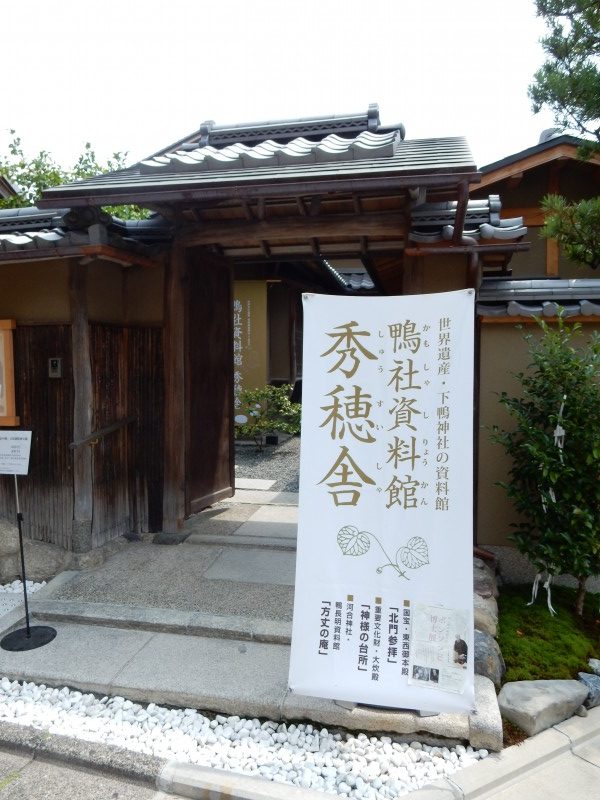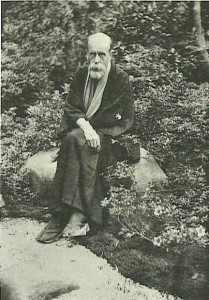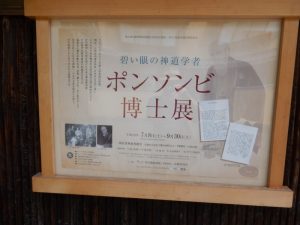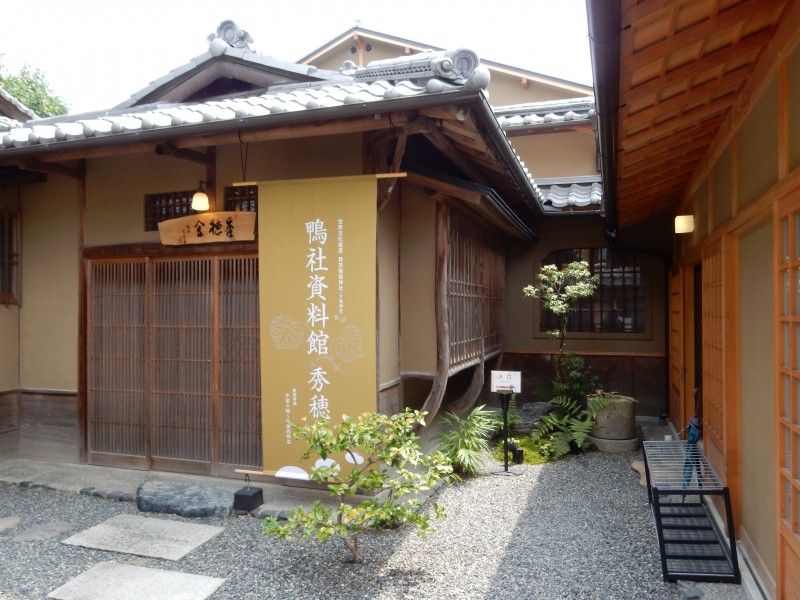
Entrance to the Ponsonby-Fane exhibition, now showing in the newly converted archives rooms
Green Shinto has written before of the remarkable preeminent Shinto scholar, Richard Ponsonby-Fane (1878-1937), an English aristocrat who made Kyoto his home in the prewar years and wrote extensive volumes about Kyoto and shrine histories. It’s said he knew more about Shinto history than even shrine priests. (For a previous article about his time in Kyoto, please see here. For the Wikipedia site about him, see here.)

The cricket-loving, scarf-wearing Shinto expert Ponsonby-Fane
At Shimogamo Shrine in Kyoto, an exhibition about Ponsonby-Fane is currently being held, which features work collected by his personal secretary, Yoshijiro Sato. Green Shinto is delighted to announce that a descendant of Sato’s brother named Yumi Kimura has written in with some family reminiscences about Ponsonby Fane, which cast a new and fascinating light on the great man and his works. Yumi Kimura writes as follows…
The secretary to Mr Richard Ponsonby-Fane was Yoshijiro Sato who was my grand-father’s elder brother. It seems that Yoshijiro Sato (whom I never met) passed away about 40 years ago. One of the photos of the exhibition poster shows Mr Richard Ponsonby-Fane being surrounded by Yoshijiro and his family relatives.
The exhibition has been prepared by my mother’s cousin living in Kyoto. It seems that it has taken about two more years than expected. Unfortunately the exhibition is only displayed in Japanese (In my opinion, Mr Richard Ponsonby-Fane was a real scholar on Japan who deserves to be recognized by the world.) I am not using this current Japanese word in bad meaning, but I believe that he was an “Otaku among Otakus” focusing on Japan, which is superb. Otherwise, he could not have left such a volume of documents and books etc which are profoundly researched. My mother suggests that he was able to do this because he had a large budget from his family background, and she presumes that current people could not do so because of insufficient budget. Also current people have too many things to do other than their own interest (curiosity) and therefore it is not easy to focus and concentrate on only one thing.
My grand-mother frequently told my mother about Mr Ponsonby-Fane with respect, joy and happiness, because my grand-parents used to be involved in his daily life in Kyoto. That is why my mother also told me about him often in my childhood. My mother remembers that there were tons of thick books (including the Kojiki, the Nihon-shoki etc) on the solid bookshelves in the house when small. They had been sent in the war to the country-side in Ibaraki-prefecture to avoid loss by fire in the air raids. The large cities were always under threat of air raids, and Kyoto was one of them. As a little girl my mother was aware then that there were some manuscripts written in a strange font though it looked like Japanese. The little girl always thought ‘Omoshiroi Ji dana’ (What interesting shaped Kanji!). That was the hand-writing of Mr Ponsonby-Fane.
My mother has learnt through her cousin in recent years that the two children were often forced by Yoshijiro to help him with Mushi-boshi (insect cleansing) for the documents and books of Mr Ponsonby-Fane. Mushi-boshi is to let books get fresh air to keep them in good condition after the humid summer days of Japan. Her cousin recalled that it was such a burden to do Mushi-boshi because the books were usually thick and heavy, so they would hope to escape the task demanded of them by Yoshijiro, but there was no way for the poor young boy and girl.
My mother imagines that her cousin had a pretty hard time to keep all Mr Ponsonby-Fane’s books for a long time in such a small house in Kyoto (it is not usual to live in a large house in Kyoto). She imagines that one of the rooms of her cousin’s house must have been occupied only with those books and documents.
Mr Ponsonby-Fane passed away toward the end of 1937, which means it has been about 80 years since then, and which is already much longer than his lifetime (59-60 years).
I wonder how he would feel about the exhibition. I hope that he is smiling (I find in the photos that he’s only smiling a bit when he’s cuddling my uncle (the baby). Other than that, it looks as if he does not smile often, but looks very serious always). My grand-mother used to tell her daughter that Mr Ponsonby-Fane loved to bring the baby along with him when going out for the O-kuge-san-mawari (making courtesy visits to the court nobles in Kyoto) – ‘Ponson-Sensei wa Masao wo yoku kawaigatte kure mashita” (Mr Ponsonby-Fane cherished my baby-boy Masao). Also, she would tell my mother that a photo of the baby (my uncle) and the mother (my grand-mother) had been relayed to the UK by him (my mother knows exactly which photo had been relayed).
The newly converted building (former shrine house) in two rooms of which the Ponsonby Fane exhibition is being held



Leave a Reply